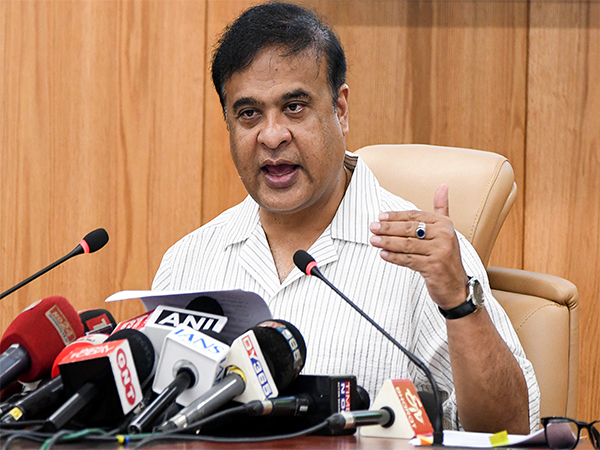Guwahati (Assam) [India], June 3 (ANI): Assam Chief Minister Himanta Biswa Sarma took to social media to reply to Pakistan over China’s threat to stop the Brahmaputra water to India. Giving a befitting reply, he called Brahmaputra ‘a river that grows in India’.
Sharing a post on X, CM Sarma wrote, “What if China stops Brahmaputra Water to India? A Response to Pakistan’s New Scare Narrative After India decisively moved away from the outdated Indus Waters Treaty, Pakistan is now spinning another manufactured threat: “What if China stops the Brahmaputra’s water to India?” Let’s dismantle this myth — not with fear, but with facts and national clarity: Brahmaputra: A River That Grows in India — Not Shrinks.”
He argued that China contributes to only 30-35 per cent of the river’s total flow, while the remaining is generated in India.
CM Sarma wrote, “China contributes only ~30-35% of the Brahmaputra’s total flow, mostly through glacial melt and limited Tibetan rainfall. The remaining 65-70% is generated within India, thanks to: *Torrential monsoon rainfall in Arunachal Pradesh, Assam, Nagaland, and Meghalaya *Major tributaries like Subansiri, Lohit, Kameng, Manas, Dhansiri, Jia-Bharali, Kopili *Additional inflows from the Khasi, Garo, and Jaintia Hills via rivers such as Krishnai, Digaru, and Kulsi.”
“At the Indo-China border (Tuting): Flow is ~2,000-3,000 m3/s. In Assam plains (e.g., Guwahati): Flow swells to 15,000-20,000 m3/s during monsoon. The Brahmaputra is not a river India depends on upstream — it is a rain-fed Indian river system, strengthened after entering Indian territory,” the Assam CM added.
Giving a reply to Pakistan, he wrote, “Even if China were to reduce water flow (unlikely as China has never threatened or indicated in any official forum), it may help India mitigate the annual floods in Assam, which displace lakhs and destroy livelihoods every year. Meanwhile, Pakistan, which has exploited 74 years of preferential water access under the Indus Waters Treaty, now panics as India rightfully reclaims its sovereign rights. Let’s remind them: Brahmaputra is not controlled by a single source — it is powered by our geography, our monsoon, and our civilizational resilience.”
Sarma’s response came after a senior aide to Prime Minister Shehbaz Sharif, Rana Ihsaan Afzal, reportedly said that India suspended the flow of the River Indus to Pakistan; China can also do the same to India.
Meanwhile, experts from different countries have expressed deep concern over China’s proposed “Great Bend Dam” on the Yarlung Tsangpo, which is known as the Brahmaputra in Tibet.
Lok Sabha MP from Arunachal Pradesh and senior BJP leader Tapir Gao said, “It is not going to be a dam, but a ‘water bomb’ to be used against India and other lower riparian countries.”
Chairman of Brahmaputra Board, Dr Ranbir Singh, pointed out that the Brahmaputra Basin is the only water-surplus river basin in India, with the rest being water-deficient. “With this dam in China, are we looking at a water-deficient Brahmaputra river basin?” he wondered.
Dr Singh also underlined the need for a multi-pronged strategy, including upping the ante against the project, garnering support in international circles, and through collaborations. (ANI)
Disclaimer: This story is auto-generated from a syndicated feed of ANI; only the image & headline may have been reworked by News Services Division of World News Network Inc Ltd and Palghar News and Pune News and World News
HINDI, MARATHI, GUJARATI, TAMIL, TELUGU, BENGALI, KANNADA, ORIYA, PUNJABI, URDU, MALAYALAM
For more details and packages















